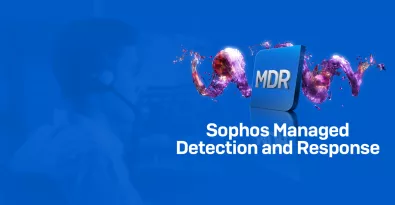A security compromise of Microsoft Active Directory (AD) can potentially undermine the integrity of your identity management infrastructure, leading to catastrophic levels of data leakage, system corruption, and destruction. That's why Active Directory Security is vital for today's business. Read on to learn more about AD Security, how it works, and the security risks you may face without adequate protection.
What Is Active Directory Security?
Active Directory (AD) security refers to cybersecurity measures and practices implemented to protect a business network's Microsoft Active Directory infrastructure. Active Directory was developed by Microsoft to easily manage and organize information about users, computers, and other resources within a network. AD security plays a central role in authentication, authorization, and the overall security of a Windows-based environment. Security Active Directory is vital to prevent data breaches and unauthorized access to data, maintain system uptime, and more.
Critical aspects of Active Directory security include:
- Authentication: Ensure only authorized users and devices can access your network and resources. This involves using strong passwords, multi-factor authentication (MFA), and other authentication mechanisms.
- Access Control and Authorization: Controlling and managing the permissions assigned to users and groups within the Active Directory, ensuring that users have the appropriate level of access to resources. Implementing access controls and least privilege principles to restrict access to sensitive resources and data, reducing the risk of unauthorized access.
- Group Policies: Implement and enforce group policies to control and configure user and computer settings. Group Policies help enforce security settings, such as password policies, account lockout policies, and other security configurations.
- Auditing and Monitoring: Enabling auditing features to track and monitor activities within the Active Directory environment. This includes logging events related to authentication, changes in permissions, and other security-relevant events.
- Security Patching and Updates: Regularly apply security patches and updates to the Active Directory servers and associated systems to address vulnerabilities and ensure a secure operating environment.
- Secure Communication: Configuring secure communication channels between Active Directory components to protect against eavesdropping and man-in-the-middle attacks. This often involves using protocols like Kerberos and implementing encryption mechanisms.
- Firewall and Network Segmentation: Employ firewalls and network segmentation to control traffic between different network parts and limit the attack surface.
- Regular Security Assessments: Conduct regular security audits and assessments to identify vulnerabilities, misconfigurations, or potential security risks within the Active Directory infrastructure.
- Backup and Recovery: Implement robust backup and recovery mechanisms to ensure the availability and integrity of Active Directory data in the event of data loss, corruption, or a security incident.
Active Directory is a widely used directory service crucial in managing and organizing network resources in a Windows environment, including user accounts, computers, and applications.
Why is Active Directory Security Important?
Active Directory security is crucial for overall network security, as compromising it could lead to unauthorized access, data breaches, and other security incidents. Regular monitoring, updating, and adherence to security best practices are essential for maintaining a secure Active Directory environment.
Do I Need Active Directory Security for My IT Environment?
The need for Active Directory (AD) security depends on a number of factors. Here are some considerations that might help you determine whether you need to focus on Active Directory security:
- Size and Complexity of Organization: In larger organizations with complex IT infrastructures, the need for robust Active Directory security is often more critical. The more users, devices, and applications connected to the network, the greater the potential security risks.
- Sensitivity of Your Data: If your organization deals with sensitive or confidential information, securing Active Directory becomes paramount. Unauthorized access to AD can lead to compromises in data confidentiality and integrity.
- Regulatory Compliance: Depending on your industry, you may be subject to various regulatory requirements that mandate specific security measures, including those related to Active Directory. Ensure that your AD security practices align with any applicable regulations.
- Risk Tolerance: Consider your organization's risk tolerance. If the impact of a security breach on your Active Directory would be significant, it's important to invest in appropriate security measures. You may need a cyber risk assessment to help you understand the risks.
- Frequent Patch Management: If you spend much time managing software patches, AD Security may help. Keep the Active Directory servers and related systems up to date with the latest security patches. Vulnerabilities in the operating system or AD components can be exploited by attackers.
The decision to invest in Active Directory security depends on your organization's specific context and risk profile. Conduct a cyber risk assessment and consider the factors mentioned above to determine the appropriate level of security measures for your Active Directory environment.
How Do I Implement Active Directory Security?
Implementing Active Directory (AD) security is crucial for protecting your organization's network and resources. Here are some best practices for implementation:
- Evaluate Your Physical Security: Ensure that physical access to the servers hosting Active Directory is restricted to authorized personnel only. Based on what you discover, you may need to implement physical security measures, such as card key access, biometric authentication, and surveillance.
- Secure Administrative Access: Limit administrative access to only those who require it. Use strong, unique passwords for all AD administrator accounts. Implement Multi-Factor Authentication (MFA) for administrative accounts to add an extra layer of security.
- Conduct Regular Audits and Monitoring: Conduct regular security audits and reviews of Active Directory. Enable auditing features to track changes to AD objects and configurations. Set up centralized logging and monitoring for suspicious activities.
- Group Policy Security: Use Group Policies to enforce security settings on all computers within the domain. Disable unnecessary services and features that could be exploited to gain unauthorized access.
- Secure Replication: Ensure that AD replication between domain controllers is secure. Use IPSec for encrypted replication traffic between domain controllers.
- Delegate Permissions Carefully: Follow the principle of least privilege when assigning permissions. Delegate administrative tasks to specific users or groups only as necessary.
- Implement Account Lockout Policies: Set account lockout policies to prevent brute-force attacks on user accounts. Monitor and investigate repeated account lockouts.
- Regular Patching and Updates: Regularly update and patch Active Directory domain controllers.
- Secure DNS: Ensure DNS security by using secure DNS configurations. Disable unnecessary DNS services and implement DNS security best practices.
- Firewall and Network Security: Implement firewalls to control traffic to and from domain controllers. Use network security best practices to protect communication between domain controllers and clients.
Remember that Active Directory security is an ongoing process, and staying informed about the latest security threats and best practices is essential to adapt your security measures accordingly. Regularly review and update your security policies to address emerging risks.
Can I Outsource Active Directory Security Management?
Yes, it is common for organizations to hire third-party vendors or managed security service providers (MSSPs) to assist with managing Active Directory (AD) security. These third-party providers often specialize in IT security services and can help ensure the proper configuration, monitoring, and maintenance of Active Directory to enhance security.
Here are some common ways an MSSP can assist you with Active Directory security:
- Security Assessment and Auditing: Third-party providers can perform security assessments and audits of your Active Directory environment to identify vulnerabilities, misconfigurations, and areas for improvement.
- Implementation of Best Practices: They can help implement best practices for securing Active Directory, including proper user and group management, password policies, and access controls.
- Monitoring and Incident Response: Third-party providers may offer continuous monitoring services to detect and respond to security incidents in real-time. This includes monitoring for unusual activities, unauthorized access, and potential security breaches.
- Patch Management: Ensuring that Active Directory servers are up-to-date with the latest security patches is crucial. Third-party providers can assist in managing the patching process to minimize vulnerabilities.
- User Training and Education: Many security incidents stem from human error. Third-party providers may offer training and educational programs to help users and IT staff understand and adhere to security best practices.
- Threat Intelligence Integration: Integrating threat intelligence feeds can enhance the ability to detect and respond to emerging security threats. Third-party providers can help implement and manage these integrations.
When considering hiring a third party for Active Directory security management, choosing a reputable and experienced provider is important. Ensure they have a good track record in the industry, understand your organization's specific needs, and comply with any regulatory requirements that may apply to your industry.
Before entering into any agreement, it's also advisable to define clear service level agreements (SLAs) and establish communication channels to ensure a smooth collaboration between your organization and the third-party provider.
Are you ready to take the next step on Active Directory Security? Get in touch with a Sophos expert today.


